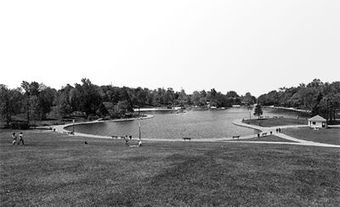John Teague
John Teague, contractor, architect (b at Redruth, Cornwall, Eng 3 June 1835; d at Victoria, BC 25 Oct 1902). Teague left England in 1856, going to California via New York. He found work as a general contractor, erecting buildings for mining companies. In 1858 he set off for the Fraser gold-fields of British Columbia. He participated in the Cariboo gold rush of 1859.
By 1860 Teague had returned to contracting and construction work in Victoria. He worked as a contractor for the Royal Navy at Esquimalt, on Vancouver Island. In 1874 Teague received his first documented independent commission to design the Church of Our Lord for a congregation of the Reformed Episcopal Church which was built the same year. His practice became one of the most successful in Victoria's history.
Teague's work, more than any other, set the tone for the city's commercial architecture from the late 1870s to the early 1890s. His influence is still evident in the old business district, where he designed dozens of blocks. His commercial buildings, such as the Turner, Beeton and Company warehouse (1882), are for the most part no-nonsense brick structures demonstrating an economical use of Victorian Italianate applied ornament. The influences seem to be Californian, reflective of his own background and that of the majority of his business clientele. In later works such as the Driard Hotel (completed 1892), Teague experimented with the styles of the Chicago School.
Teague was responsible for the design and construction of many of Victoria's most significant civic, ecclesiastical, and residential buildings. He did not persevere with the high Victorian mansard style used in the 1870s for the Victoria City Hall and the Masonic Temple. He was most at home in the Italianate idiom. The St. Joseph's, Royal Jubilee, and Royal Navy hospitals, the residences erected in 1885 for brick manufacturer Maurice Humber, the Roman Catholic bishop, and the Prior family, the storekeeper's house for the Admiralty in Esquimalt (1885), and St. Ann's Academy (1886) were products of his lucrative and prolific practice.
An active freemason, Teague served as an alderman and was twice mayor of Victoria. He belonged to the British Columbia Pioneer Society and was typical of those pioneers whose energy was exceeded only by their individual vision and ambition. Generous in his loans to friends and unwise in his investments, he died in 1902 with about as much to his name as he had when he first arrived in Victoria four decades earlier.

 Share on Facebook
Share on Facebook Share on X
Share on X Share by Email
Share by Email Share on Google Classroom
Share on Google Classroom


